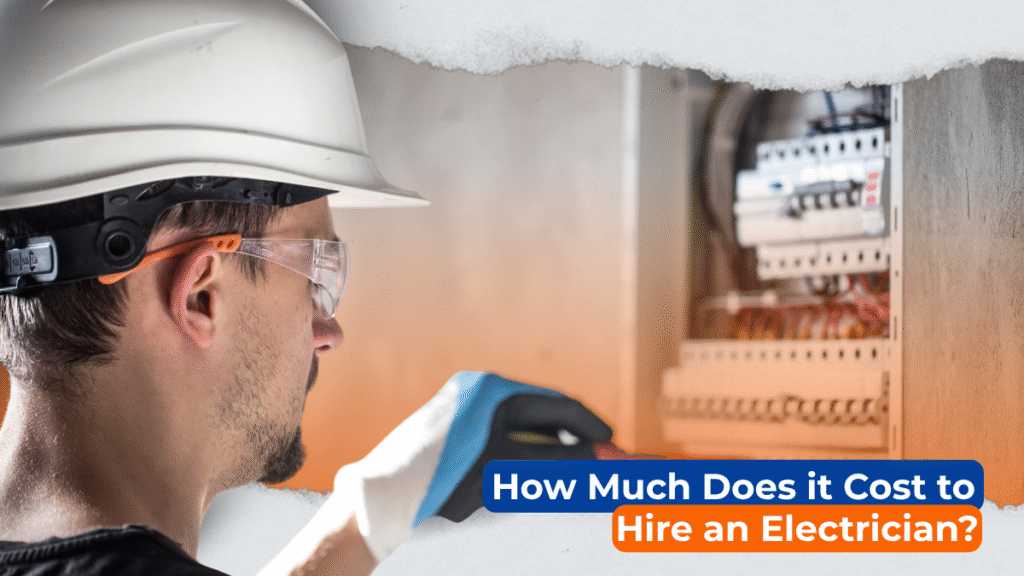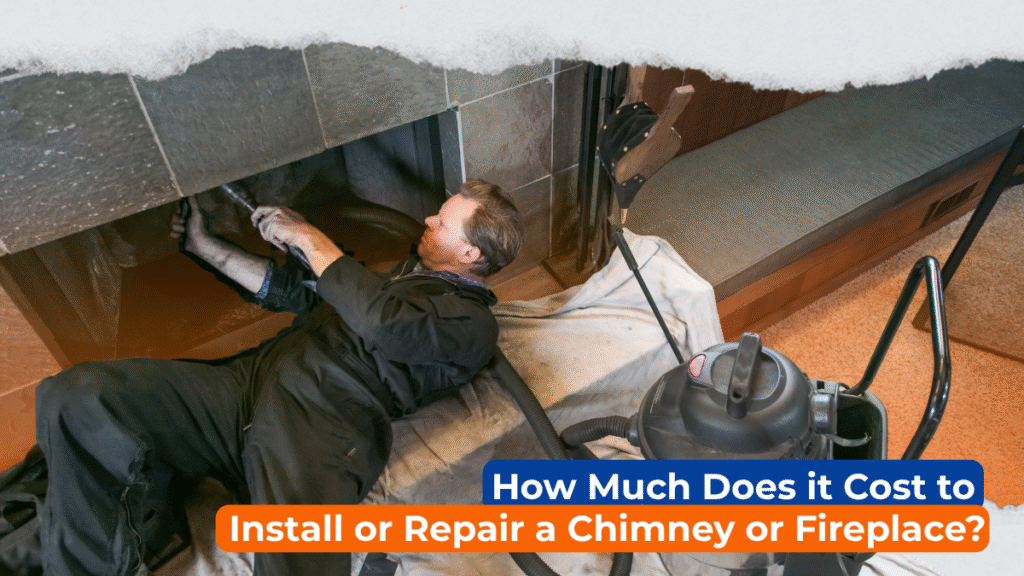If you’re a homeowner trying to budget for a refresh, or a contractor comparing project estimates, you’ve probably asked: how much does it cost to paint a house (inside or out)? Or maybe wallpaper is in the mix. In this article, Dr. Home Fixer will break down the costs, the trade‑offs, and how to make a smart decision. You’ll receive realistic ranges, cost drivers, and tips to avoid unexpected fees.
Understanding the Basics: Painting vs Wallpaper
Before diving into numbers, it helps to understand what’s involved with each approach.
What is included in a painting job
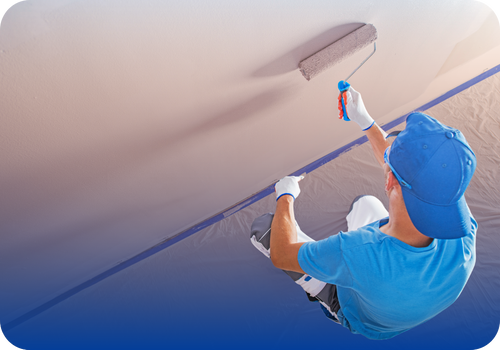
A decent painting contract generally should consist of:
- Surface prep – cleaning, sanding, patching holes or cracks, caulking trim gaps
- Priming (if needed)
- Paint materials – primer, topcoats, finish paints
- Labor – brushing, rolling, cutting in around windows/doors, trim, and ceiling
- Masking & protection – covering floors, furniture, trim, windows
- Cleanup & waste disposal
- Minor repairs – small drywall patches, nail hole filling, plaster repair
If your walls are in rough shape (lots of repairs or texture to smooth), contractors may charge extra.
What is included in a wallpaper installation
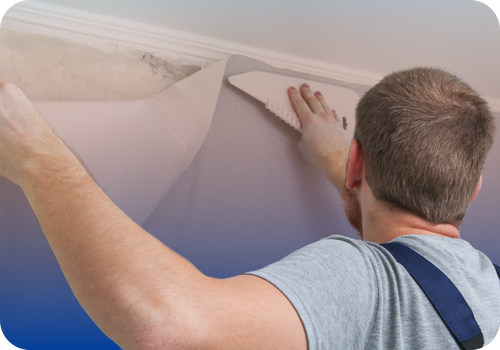
Wallpaper jobs often bundle:
- Surface prep & smoothing – sanding, skim coat, sometimes applying a liner or underlayer
- Wallpaper material – rolls (or sheets), adhesive or paste
- Labor – measuring, cutting, pattern matching, seams, trimming edges
- Removal of old wallpaper (if existing)
- Masking, cleanup, and waste
- Additional allowances for waste (pattern matching means more material)
Wallpaper installation is typically more labor-intensive per square foot than paint, especially for pattern-heavy or textured wallpaper.
Pros & cons: cost, durability, aesthetic impact
Here’s a side‑by‑side comparison
Feature | Painting | Wallpaper |
Cost (initial) | Usually cheaper per sq ft for large areas | More expensive labor and materials, especially for patterns |
Durability/maintenance | Repainting every 5–10 years, depending on finish and environment | Good wallpaper can last 10+ years, though seams may peel, and water damage is a risk |
Aesthetic impact | Versatile, easy to switch colors, good for large coverage | High design impact, texture, pattern, accent walls, depth |
Flexibility/changeability | Easier to repaint or update | Removal and replacement are labor-intensive and sometimes damaging |
Complexity | Less pattern matching, easier for DIY | Pattern matching, waste, and seams demand precision and skill |
Wallpaper shines in design-forward interiors, accent walls, or where a unique texture or pattern is desired. Paint is more forgiving, easier to maintain, and cheaper for broad coverage.
How Much Does It Cost to Paint a House (Interior)
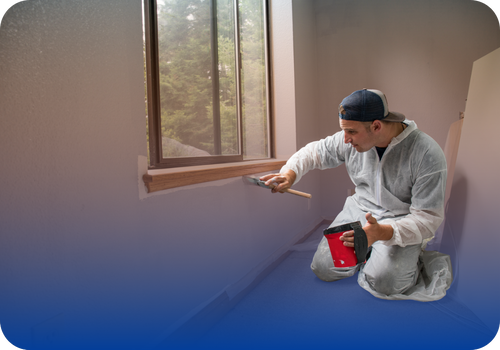
Let’s drill into interior painting cost drivers, per-square-foot benchmarks, and room-level examples.
How much does it cost to paint a house interior? Average cost ranges
According to multiple sources, professional interior painting jobs in the U.S. commonly fall in these ranges:
- HomeGuide: $1 to $3 per square foot (coverage area) for labor and materials.
- Angi: $2.75 per square foot; including walls, trim, ceilings, can push toward $4.70 per sq ft.
- Improovy: $2.75 per sq ft; with walls, trim, ceilings ~ $4.69 per sq ft.
- Construct Estimates: broad range $2 to $8 per sq ft, depending on complexity.
- So, a ballpark: $2 to $5 per sq ft is typical for many U.S. homes, with low complexity and average materials.
If you have 2,000 sq ft of coverage area (walls + ceilings + trim), you might expect $4,000 to $10,000, depending on condition and finish.
Interior painting cost per square foot (walls, ceilings, trim)
To break it down:
- Walls: $1 to $2 per sq ft
- Ceilings: $1 to $2 per sq ft additional
- Trim/baseboards/woodwork: $1 to $4 per linear foot, depending on detail and finish
- Accent walls, multiple colors, and custom finishes will add 20–30%
Labor is often 70–85% of the total cost, with materials (paint, supplies) being the rest.
Note: In DIY mode, you might reduce costs to $1–$3 per sq ft (materials + your time), but this assumes you handle prep and have tools.
Cost to paint specific rooms (bedroom, bathroom, kitchen, living room)
Different rooms bring different challenges:
- Bedroom: simpler geometry, fewer obstacles → often $350 – $850 per room.
- Living Room / Dining Room: larger wall area, perhaps high ceilings → $600 – $2,000
- Bathroom: smaller room but high moisture environment, needs mildew-resistant paint → $150 – $400
- Kitchen: tricky surfaces (backsplash, trim, cabinets) → $150 – $250 for walls alone; more if trim included
- Hallways / Stairwells: tighter spaces, often more vertical work, may cost more per sq ft
Rooms with many doors, windows, built-ins, or detailed trim raise cost because of extra cutting in and masking.
How paint quality, finish, and type affect cost
Paint type matters:
- Economy latex/acrylic: $15–$30 per gallon
- Mid-tier brands / nicer finishes: $30–$50
- Premium / low-VOC / specialty paints: $50+ per gallon
- Glossy, enamel, and specialty coatings cost more
Also, the number of coats, color change (especially going from dark to light), may require extra primer or coats.
How surface condition and prep work add to cost
If walls are new or in good shape, prep might be minimal. But if walls have damage, holes, peeling paint, water stains, or textures to smooth, expect extra:
- Drywall or plaster repair: $0.50–$0.75 or more per sq ft.
- Skim coating/texture smoothing
- Stripping old finishes or wallpaper
- Sanding, cleaning, priming
These can add hundreds or more, depending on the condition.
Labor vs materials: how much each contributes to the total cost
As mentioned earlier:
- Labor usually = 70%–85% of total
- Materials = 15%–30%
- Extra on atypical work (scaffolding, heights, specialty finishes) falls under labor premiums
When you get quotes, ask the contractor to break out material vs labor.
How Much Does It Cost to Get a House (Exterior) Painted
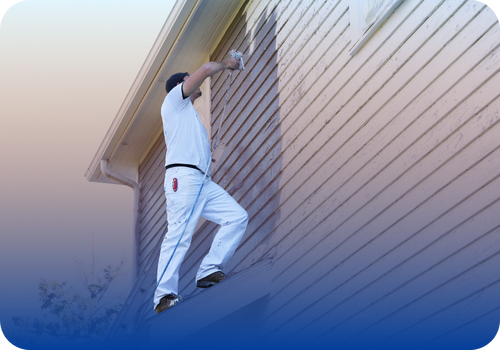
Painting the exterior of a house tends to cost more than interiors, largely due to access, weatherproofing, and surface conditions.
Exterior painting: cost per square foot / per 1000 sq ft
Many estimation tools use per-square-foot rates for exterior:
- HomeWyse: $4.74 to $8.92 per sq ft (interior + exterior combined model)
- The Spruce: $1.50 to $4 per sq ft for exterior painting (depending on size, stories)
- Typical exterior house repaint: $1,800 to $4,449 for a single-story or modest two-story home.
If your home’s exterior walls’ surface area is, say, 2,000–3,000 sq ft (not counting walls in the back and front separately), you could expect $3,000 to $10,000+, depending on height, condition, siding type, and complexity.
Factors unique to exterior work: number of stories, type of siding, weather, accessibility
Key factors that push costs upward:
- Number of stories: higher floors need ladders, scaffolding, lifts → more risk and time
- Siding type: wood, stucco, brick, vinyl; each has different prep and paint needs
- Accessibility: landscaping, bushes, trees, deck railings, eaves, gutters
- Weather: delays, primer for weather damage, moisture mitigation
- Detail work: fascia, trim, gutters, shutters, windows
Prep work outdoors: power washing, scraping, priming, and repairs
Preparation is critical for exterior durability:
- Power wash to remove dirt, mildew
- Scrape / sand peeling or flaking paint
- Prime bare wood or repaired areas
- Caulk/seal gaps
- Repair siding or trim
These steps can be substantial, and a contractor may require extra if surfaces are in worse shape.
How Much Does Wallpaper Installation Cost
Now let’s compare with wallpaper: material, labor, and extra costs.
Average cost to install wallpaper per square foot / per roll
Common benchmarks:
- HomeGuide: $4 to $10 per square foot installed (labor & materials)
- HomeWyse: $4.93 to $10.39 per sq ft for basic installation
- Fixr: vinyl-coated wallpaper installation $3.70 to $8.20 per sq ft (labor + materials)
- Thumbtack: One contractor quoted $3.22 per sq ft for vinyl wallpaper in the D.C. area.
Wallpaper rolls vary, but many standard rolls cover ~ 28–30 sq ft (some double rolls ~ 56–60 sq ft). Waste for pattern matching often means buying extra.
Material costs of wallpaper (types: peel‐and‐stick, vinyl, textured, designer)
Wallpaper materials range widely:
- Peel-and-stick / removable: lower end, easier to install and remove
- Vinyl / vinyl-coated: mid to upper range, washable, durable
- Textured, grasscloth, fabric, designer: higher end: $2 to $8+ per sq ft material cost
- Designer/custom murals: premium pricing
Because of patterns, matching, and waste, you might need 10–20% extra material.
Labor costs & room‐by‐room examples for wallpaper installation
Labor is the big driver:
- Typical labor: $3 to $7 per sq ft.
- Labor per roll: $30 to $50+, depending on complexity
- Example ranges:
- 12 ft × 8 ft wall (~96 sq ft): $400 to $1,000 installed
- Small bathroom: $450 – $1,800
- Bedroom: $1,300 – $4,800
Additional costs: removing old wallpaper, wall prep, matching patterns, cutting waste
These extras can hit your pocket:
- Removal: $0.80 to $3 per sq ft, depending on glue, layers, and condition
- Wall smoothing/skim coating/priming
- Waste from pattern matching
- Cutting complex shapes around windows, outlets, and lighting
- Extra labor for seams, trimming, and smoothing
One homeowner even reported a $1,800 quote for a small powder room’s new wallpaper job (five rolls, high-end paper).
Combined Projects: Painting + Wallpaper
Sometimes jobs mix paint and wallpaper, for example, wallpaper on an accent wall and paint elsewhere.
When it makes sense to use wallpaper vs paint or mix both
- Use wallpaper for a feature wall or accent area
- Use paint for the majority to reduce cost
- Combine when you want the design punch of wallpaper without paying a premium for every wall
Cost considerations when you have accent walls, partial wallpaper, etc.
- You get Labor synergy: installers may already be on-site
- You save on prep: shared masking, cleanup, stage setup
- But you must pay for pattern matching waste on wallpaper walls, and paint still must meet trim lines
How combining projects can save on prep or labor
If a contractor is already doing wall prep, priming, or masking for painting, adding wallpaper to one wall might incur less marginal cost than doing it separately. Always ask for bundled pricing.
Regional & Other Cost Factors
Your local market and unique project details can shift what’s “normal.”
How location (city/state) affects labor rates and materials costs
As with many trades:
- Big metro areas / high-cost-of-living areas have higher labor rates
- Transportation, insurance, and permit costs differ by state
- Regional demand and local supply chains affect paint and wallpaper markup
A contractor in San Francisco will typically charge more per square foot than one in a rural Midwestern region.
How ceiling height, trim work, number of colors, doors/windows impact total cost
These are frequent hidden variables:
- Higher ceilings → more ladder work, more paint
- More colors / multiple walls change colors → extra coats, cleanup
- Many windows, doors, built-ins, and niches add cutting-in and detail time
- Extensive trim or crown molding → more labor
Seasonal effects, supply availability, and shipping for special wallpaper
- Off-season painting jobs may get discounts
- Specialty wallpaper may incur long lead times and higher shipping costs
- Price increases or material shortages can affect quotes
Typical Cost Ranges & Examples
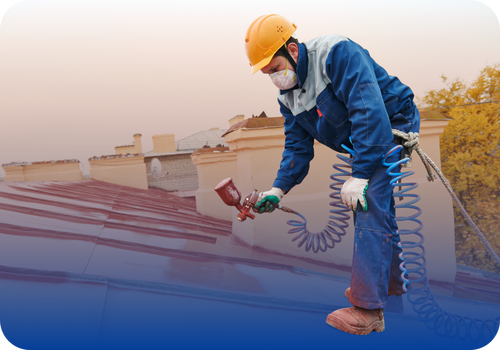
Here are sample scenarios to anchor your expectations.
Small room (e.g., bedroom) painting cost example
Let’s say a 12′ × 14′ bedroom, 8′ ceiling, two coats, standard paint:
- Coverage area (walls + ceiling): (2 × (12 + 14) × 8) = 416 sq ft
- Trim and doors/windows add extra
- At $2 to $4 per sq ft → $800 to $1,700
- In practice, many quotes for bedrooms fall in the $350–$850 range (smaller rooms)
Whole interior painting of a medium-sized house costs: An example
A 2,000 sq ft home with 8′ ceilings, average walls:
- Coverage area might be ~ 3,500–4,500 sq ft (walls + ceilings + trim)
- At $2 to $4 per sq ft → $7,000 to $18,000
- Many real quotes land in $6,000 to $10,000 range, depending on region and condition
Cost of wallpapering a typical room (living room, bathroom, etc.)
Take a standard 12′ × 14′ living room:
- Wall area ~ 416 sq ft
- Wallpaper cost + labor: $4 to $10 per sq ft → $1,600 to $4,160
- If it’s a bathroom or smaller room: $450 to $1,800 is common.
High‑end scenario: premium materials, custom wallpaper, ornate trim
In a high-end home:
- Designer wallpaper with texture or custom print: $6 to $15+ per sq ft, just in material
- Intricate trim, cornices, medallions, and curved walls
- Specialty paints, finishes, metallic coatings
- Labor might run $10+ per sq ft in complex cases
Thus, a luxury wallpapered room could easily run $5,000–$10,000 or more.
Tips to Reduce Your Painting & Wallpaper Costs
You don’t have to pay top dollar if you plan smartly. Here are tactics:
DIY vs hiring professionals: What parts can you do yourself
- DIY prep work (moving furniture, patching, sanding) saves labor costs
- Do the accent wall paint or touch-ups yourself
- But professional installers often give better finish quality, avoid mistakes, and bring efficiency
If you DIY, at least get the room ready before the painter arrives.
Choosing paint/wallpaper wisely: quality vs price trade-offs
- Use mid-tier paint brands with good warranties
- Avoid ultra-premium unless you really need special properties
- For wallpaper, pick simpler patterns (less matching waste)
- Consider peel-and-stick or removable wallpaper for less labor
Proper preparation to avoid costly surprises later
- Walk through walls and spot defects before quoting
- Ask the contractor to include a buffer for unseen damage
- Understand warranty or repair clauses
- Use primer to avoid extra coats
Getting multiple quotes, asking the right questions
When you get estimates, always ask:
- What’s included (prep, primer, repairs, number of coats, cleanup)
- Labor vs materials breakdown
- Has the contractor dealt with homes in your area / your siding type?
- Insurance, licensing, references
- Payment schedule
- How they handle extra repairs discovered during work
Don’t just choose the lowest bid; pick one you trust.
FAQs
How many coats of paint are needed?
Two coats ensure good coverage, with a third coat sometimes necessary for tricky color changes or finishes.
Can you paint over wallpaper? What’s the cost vs removing it?
You can paint over wallpaper in some conditions (if it’s intact, adhered well, smooth, and non-textured). But it’s risky, seams may show or slowly peel. Removal is usually recommended. Removal costs $0.80–$3 per sq ft (depending on difficulty).
How long does wallpaper last compared to paint?
Good wallpaper can last 10–20 years or more if well maintained (away from water). Paint typically needs refreshing every 5–10 years, depending on quality, environment, and wear.
Which is more cost‑effective long term: paint or wallpaper?
Paint is more cost-effective for broad coverage and ease of change, while wallpaper is better suited for high-impact feature walls or low-maintenance designs, despite its higher upfront cost.
Conclusion
When you start your project, measure your surfaces carefully, assess the condition of walls, decide on the quality of materials, and get at least three written quotes. The best contractors will break out what’s included (prep, repairs, coats) so you truly know what you’re paying for.
If you’d like help estimating your specific house, comparing contractor bids, or figuring out cost‑effective materials, Dr. Home Fixer is ready to assist.
Need Help Managing Big Upgrades Like Interior Painting or Wallpapering?
Whether you’re refreshing a single room or reimagining your entire home’s interior, Dr. Home Fixer makes it easier.
- Track interior painting and wallpaper projects
- Get reminders for repainting before wear and tear sets in
- Know when it’s smarter to DIY, touch up, or hire a handyman
We also handle a wide range of home services, including:
And much more… from appliance repair to window installation and repair.
Clear choices. No regrets. Just intelligent improvements, conveniently located in one place.


